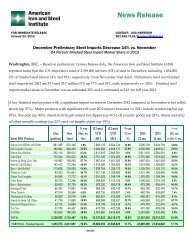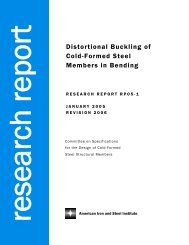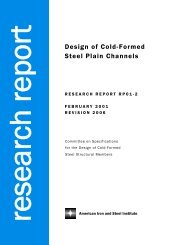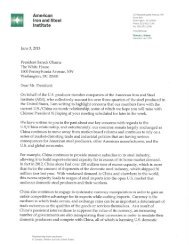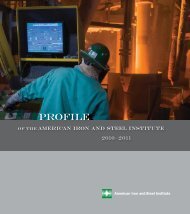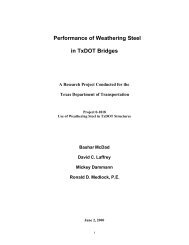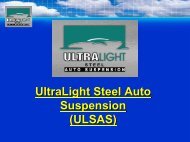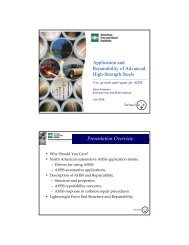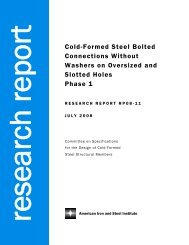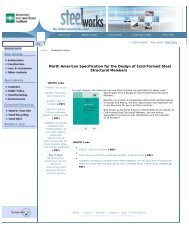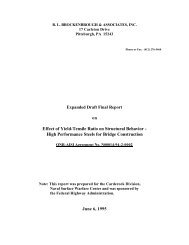Environmental Life Cycle Assessment of Southern Yellow Pine ...
Environmental Life Cycle Assessment of Southern Yellow Pine ...
Environmental Life Cycle Assessment of Southern Yellow Pine ...
Create successful ePaper yourself
Turn your PDF publications into a flip-book with our unique Google optimized e-Paper software.
EXECUTIVE SUMMARY<br />
1.2 Summary <strong>of</strong> Findings <br />
This study compared two scenarios: Business-‐As-‐Usual (BAU) and Steel Pole Replacement (SPR), <br />
comparing the implications <strong>of</strong> the use <strong>of</strong> wood and galvanized steel utility poles in the Southeast. Of <br />
the thirty-‐five independent category indicators that were assessed and quantified: <br />
• 21 indicators show a clear benefit (a difference <strong>of</strong> 25% or more) in terms <strong>of</strong> lower impact <br />
levels associated with the use <strong>of</strong> galvanized steel utility poles under the SPR scenario. For 12 <br />
<strong>of</strong> these indicators, the difference was 100% or greater. <br />
• 4 indicators do not show a clear advantage toward either the SPR or BAU scenario, differing <br />
by less than 25%. For these indicators, results are within the margin <strong>of</strong> error, considering the <br />
uncertainties in the inventory and environmental characterization data used in the <br />
assessment.<br />
• 10 show a clear benefit in terms <strong>of</strong> lower impact levels associated with the use <strong>of</strong> wood <br />
utility poles under the BAU scenario. For 5 <strong>of</strong> these indicators, the difference was 100% or <br />
greater. <br />
Five additional impact categories were identified as environmentally relevant but could not be <br />
quantified due to insufficient data. However, impact reductions <strong>of</strong> 100% or greater favoring the SPR <br />
scenario would be anticipated if measurements were possible, based on available information. This <br />
categories include: the exposure <strong>of</strong> humans, flora, and fauna to toxic substances, resulting from <br />
arsenic ore extraction and refining in China; the exposure <strong>of</strong> workers to toxic herbicides in the <br />
Southeastern US as a result <strong>of</strong> herbicide application associated with forestry operations in this region; <br />
disturbance to wetland and freshwater biomes in the Southeastern US, resulting from forestry in this <br />
region; disturbance to suitable freshwater and wetland habitats for species in the Southeastern US, <br />
resulting from forestry in this region. <br />
The findings are summarized in Table 1 below. In the table, Indicator results are reported by Impact <br />
category. If there are multiple indicators per impact category, these are bulleted and listed <br />
separately. For indicators measuring net impacts, breakout data are provided in italics. Negative <br />
results indicate cooling effects from greenhouse gases and black carbon, or avoided depletion as a <br />
secondary consequence related to reduced extraction <strong>of</strong> metal ores. <br />
The study findings should not be interpreted to imply that all environmental indicators should be <br />
“weighted” equally, but rather, that individual indicators should be considered separately in their <br />
appropriate context. <br />
Further discussion <strong>of</strong> the scenarios studied and the key findings are found in the remainder <strong>of</strong> the <br />
Executive Summary. <br />
April 2013 | ©SCS Global Services <br />
ES-‐ 2



